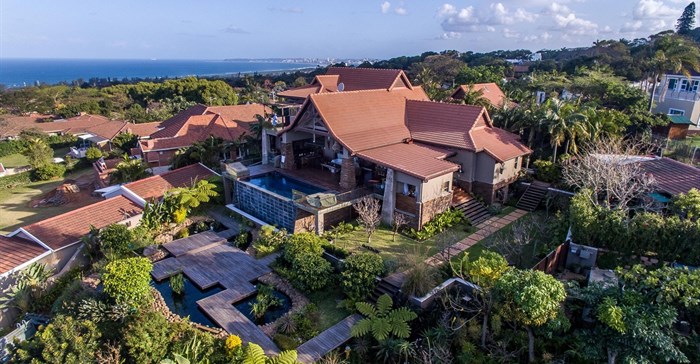While the commercial sector has led the charge in terms of green building initiatives and ratings, the residential property market is now also embracing this trend.

Durban North property with green-energy leanings including conservation of rain water, solar heating and home automation. Image source: Pam Golding Properties
“In addition to a desire to contribute to a healthy and sustainable natural environment, property owners are motivated by rising utility costs and scarcity of resources, as evidenced by the current water shortage in the Western Cape and electricity cuts in recent years. This has resulted in home owners seeking increased independence with respect to the supply of these utilities," says Gareth Bailey, Pam Golding Properties area principal for Durban Coastal.
“In implementing these green initiatives, property owners need to weigh up their green ideals with economic feasibility. There are many features that homeowners can incorporate to promote the efficient use of resources, health of our environment, and independence of supply, but these features need to be economically viable. Green initiatives often cost money upfront, but can result in significant operational savings down the line.”
Long-term benefits
Bailey says it is evident that there are an increasing number of homeowners looking to implement such initiatives in their homes and on their properties. These features are also being seen as value-adds for homebuyers who are looking at the significant long-term benefits of reduced utilities costs.
“There are certain green features which are economically justifiable and that building professionals often refer to as the ‘low hanging fruit’ of green building design. Rain water harvesting is one such measure where JoJo tanks, which can be placed underground, collect rain water run-off from hard surfaces. Combined with a submersible pump, this water reserve can be used to irrigate landscaping. This requires a small outlay upfront and produces very significant benefits in the long term.
“Regulating water use through flow-and-stop and slower water flow mechanisms can assist in reducing water consumption, while LED’s and light motion sensors can similarly reduce electricity consumption.”
Efficient design
According to George Elphick, director of Elphick Proome Architects, another affordable green feature is incorporating thermally efficient principles in the design of the home. He says the correct orientation of a property on its site combined with responsible thermal design will ensure that the property is well insulated, ventilated and has sufficient heat gain reduction measures such as East and West facing sun screens. “Good thermal design can eliminate or at least reduce the need for air-conditioning which we are so reliant upon along our coastline. Overall, these measures can reduce the energy bill by up to 50%,” he says.
Although some may feel that green property design is a lofty ideal that comes with an unjustified price tag, there are serious and accessible benefits available to property owners especially if they design their properties with these principles in mind from the outset.
According to Elphick, the cost premium of implementing the ‘low hanging fruit’ mentioned above is roughly 4% of the normal building cost. If an owner pursues the storage of electricity in battery cells then this premium can increase by a further 2% or 3%.
Adds Bailey: “I believe that over the next decade we will see a steady increase in demand for properties which protect and promote our natural environment, incorporate green features, reduce operating costs and secure the provision of water and electricity supplies. This demand will drive price premiums for properties that cater to these needs.”

















































